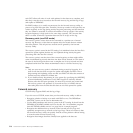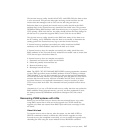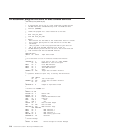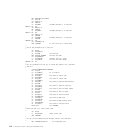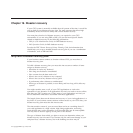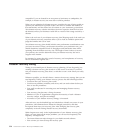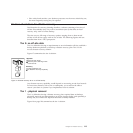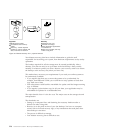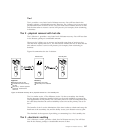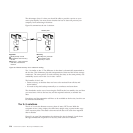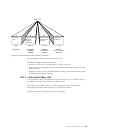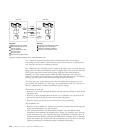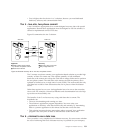
acceptable. If you are located in an area prone to hurricanes or earthquakes, for
example, a disaster recovery site next door would be pointless.
When you are planning for disaster recovery, consider the cost of being unable to
operate your business for a period of time. You have to consider the number of
lost transactions, and the future loss of business as your customers go elsewhere.
Your disaster recovery solution should not be more expensive than the loss from
the disaster, unless your business would fail as a result of the outage caused by a
disaster.
What is the real cost of your disaster recovery plan? Keeping track of the total cost
of your disaster recovery procedures allows you to look at available options and
judge the benefits and cost of each.
Your disaster recovery plan should include some performance considerations once
you have recovered. Unless your disaster site mirrors your production site, you
should determine acceptable levels of throughput and transaction times while
operating from the disaster recovery site. The length of time it takes to recover
your primary site can also determine what your disaster recovery site has to
support in the interim.
In summary, be aware that risk, speed of recovery, and completeness of recovery
have to be balanced against cost.
Disaster recovery testing
Testing is an essential part of disaster recovery planning. All too frequently, just
creating a disaster recovery plan results in a false sense of security. If you don’t
test your disaster recovery plan, there’s a risk that it won’t work when you really
need it.
Whenever possible, you should choose a remote site recovery strategy that you can
test frequently. Testing your disaster recovery process has the following benefits:
v You know that your recovery plan works.
v You discover problems, mistakes, and errors, and can resolve them before you
have to use the procedures.
v Your staff are educated in executing tests and managing disaster recovery
situations.
v Your recovery plan becomes a living document.
v Members of your IT organization recognize the necessity of such a disaster
recovery concept, and plan accordingly.
v Awareness of your disaster recovery strategy is increased.
After each test, use the detailed logs and schedules to identify any errors in your
procedures, and eliminate them. Retest the changed procedures, and then
incorporate them into your recovery plan. After changing the recovery plan,
completely revise all existing disaster recovery documents.
Make frequent tests early in the implementation of your disaster recovery plan.
Once you have removed the major problems, you can test less frequently. The
frequency will depend on:
v The interval between major changes in your hardware and software
v How current you want to keep the recovery plan
224 CICS TS for z/OS 4.1: Recovery and Restart Guide



